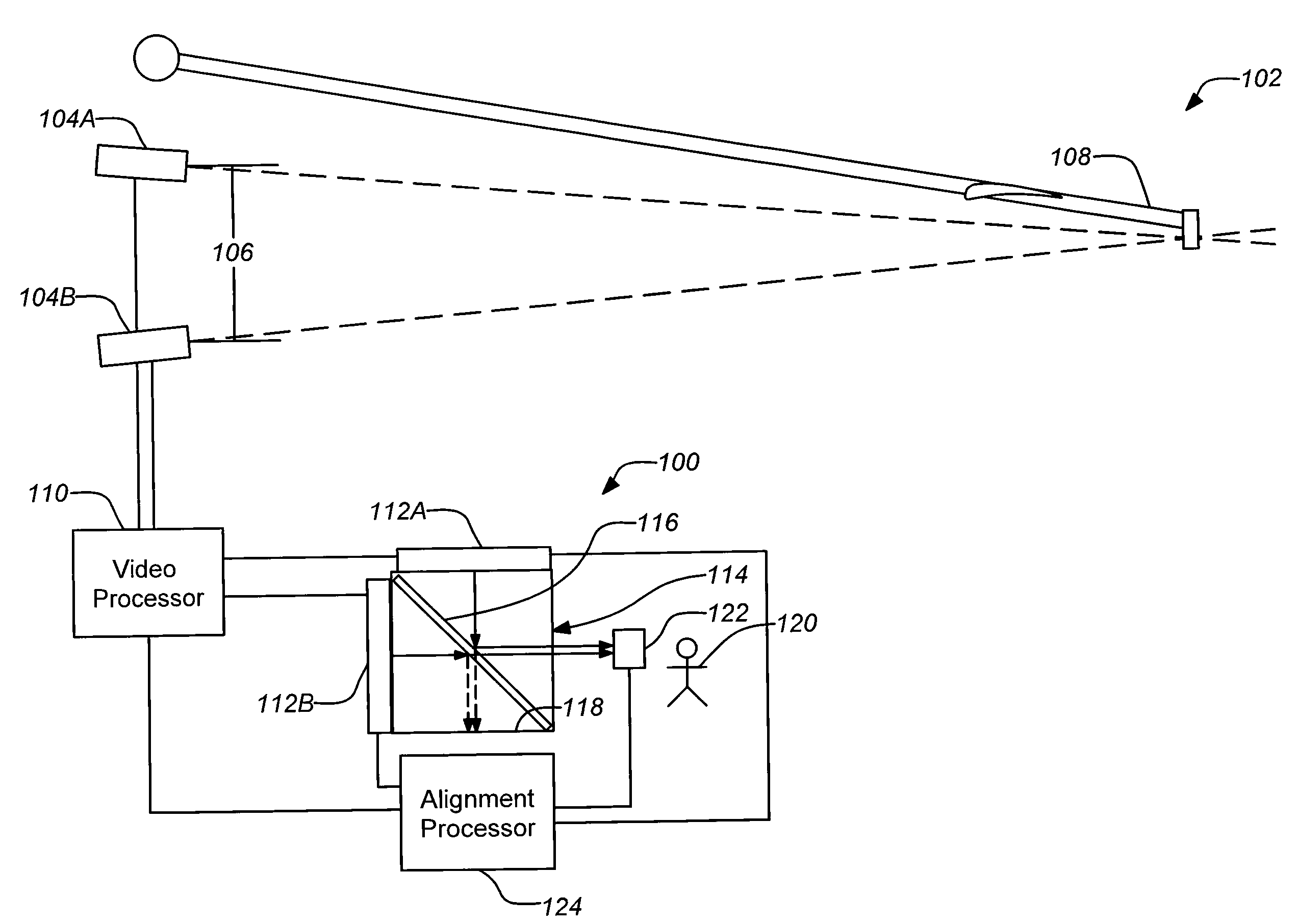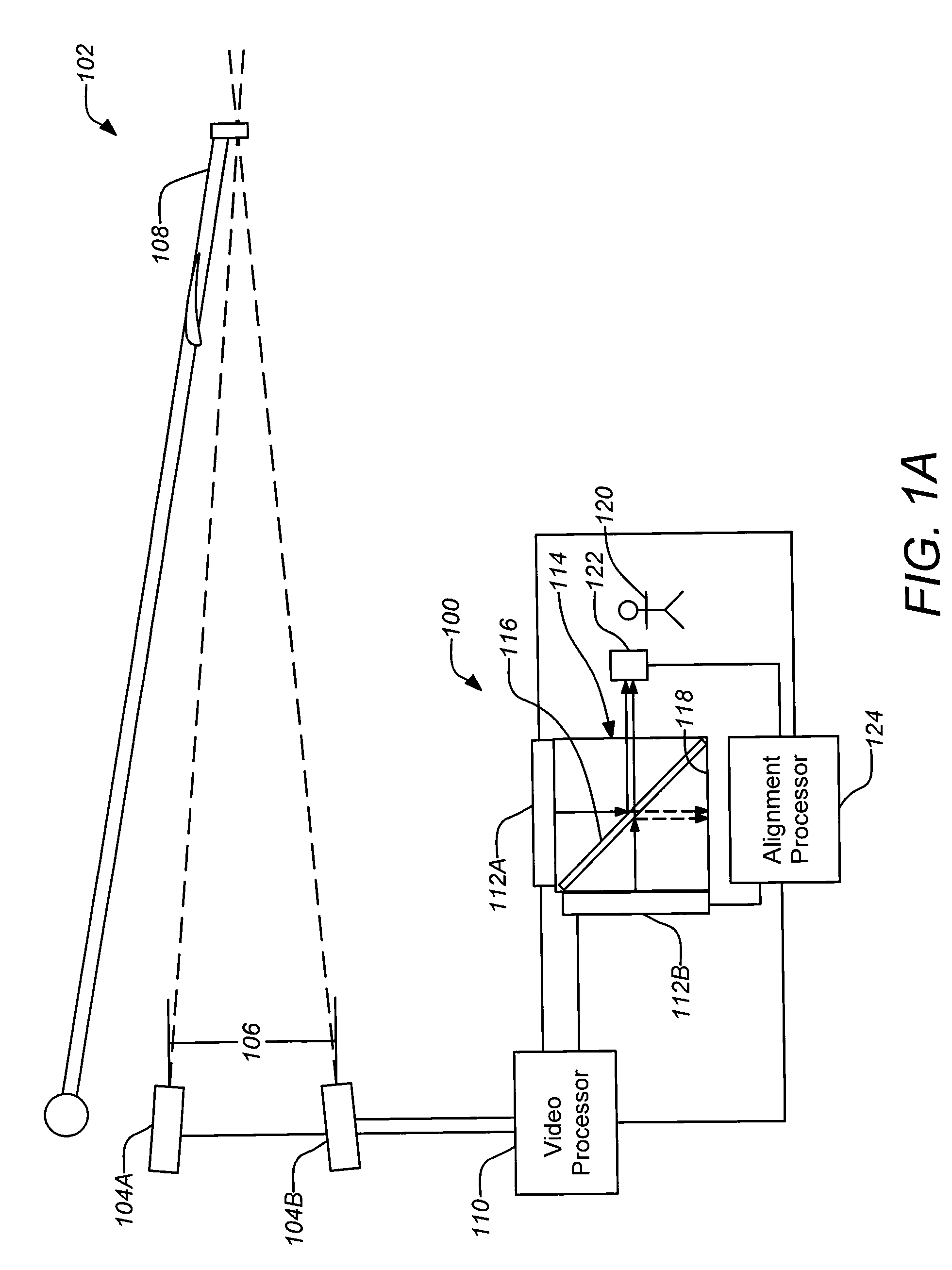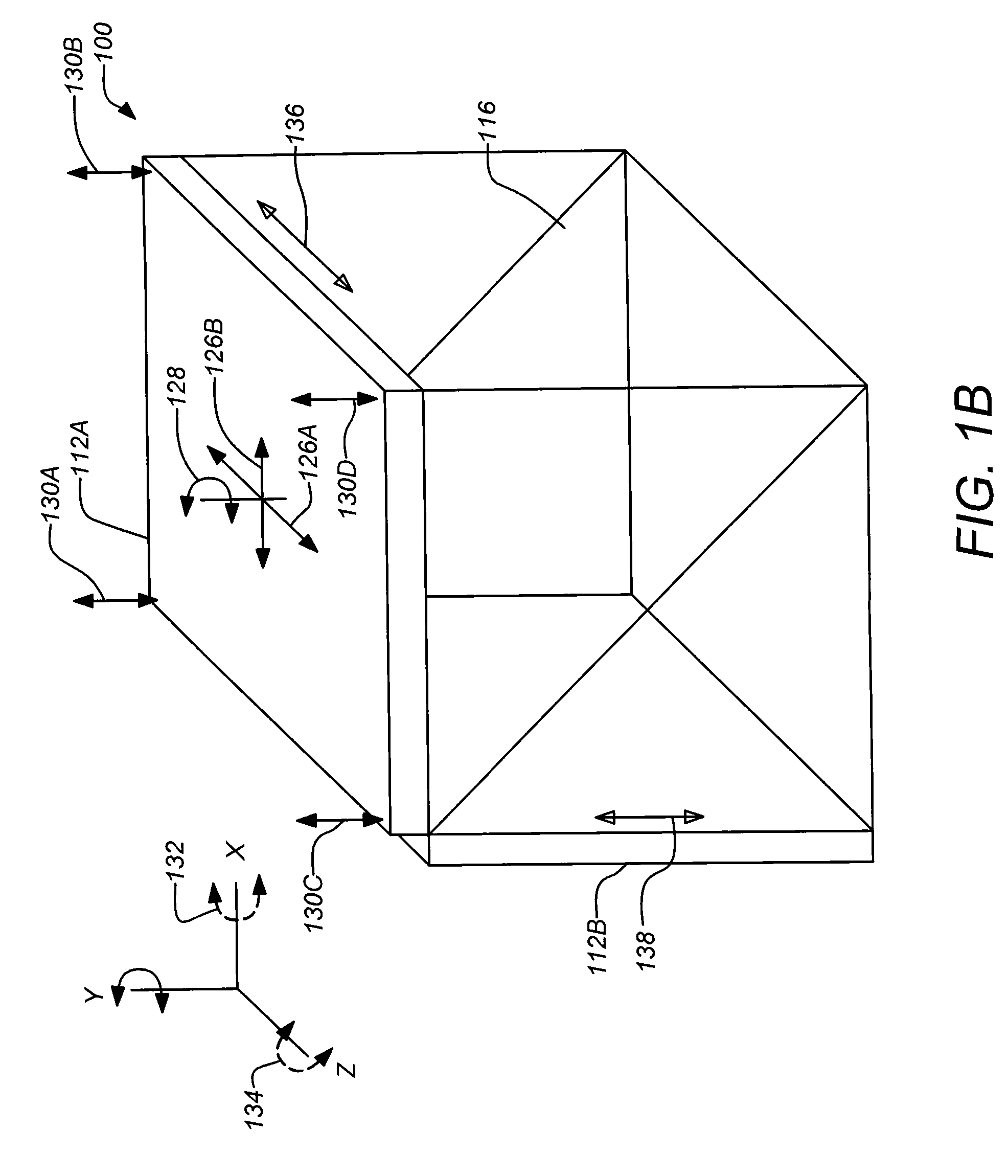Efficient and accurate alignment of stereoscopic displays
a stereoscopic display and accurate technology, applied in the field of stereoscopic three-dimensional display system, can solve the problems of unsafe operation of remotely controlled equipment using the display system, inefficiency of the application employing the display, visual fatigue, image distortion,
- Summary
- Abstract
- Description
- Claims
- Application Information
AI Technical Summary
Benefits of technology
Problems solved by technology
Method used
Image
Examples
Embodiment Construction
[0034]1. Overview
[0035]Embodiments of the present invention are directed to a method and apparatus that provides assistance to an operator (e.g. a technician) in aligning the left and right image channels a two-image stereoscopic three-dimensional display by showing left and right alignment patterns on the left and right image screens, pre-computed for any given input imaging geometry, such that the operator has simply to visually superimpose the left and right test patterns by moving the display elements using display positioning equipment and / or software. This ensures that the stereoscopic three-dimensional display geometry matches the three-dimensional camera imaging geometry in order to produce a minimally-distorted visual depth perception of objects in space. An additional enhancement may be achieved by having these display adjustments performed automatically without requiring visual feedback to an operator in the loop. Such precision alignment can be essential for efficient an...
PUM
 Login to View More
Login to View More Abstract
Description
Claims
Application Information
 Login to View More
Login to View More - R&D
- Intellectual Property
- Life Sciences
- Materials
- Tech Scout
- Unparalleled Data Quality
- Higher Quality Content
- 60% Fewer Hallucinations
Browse by: Latest US Patents, China's latest patents, Technical Efficacy Thesaurus, Application Domain, Technology Topic, Popular Technical Reports.
© 2025 PatSnap. All rights reserved.Legal|Privacy policy|Modern Slavery Act Transparency Statement|Sitemap|About US| Contact US: help@patsnap.com



